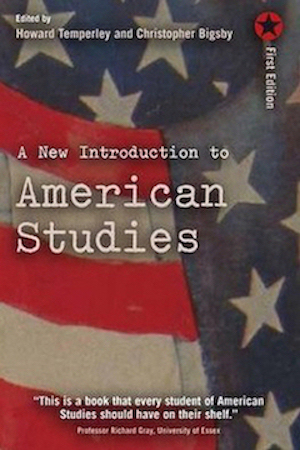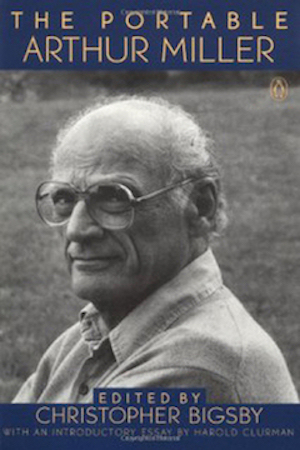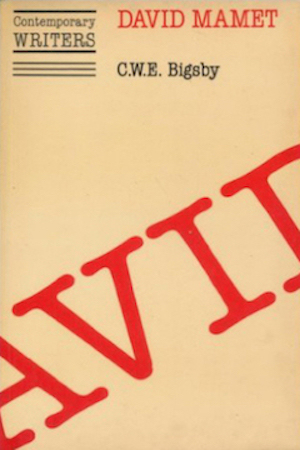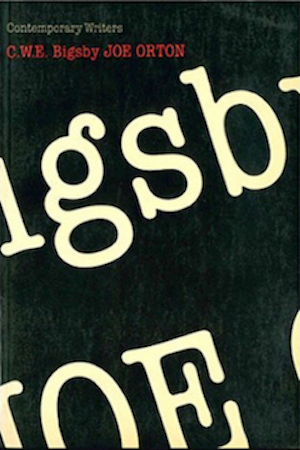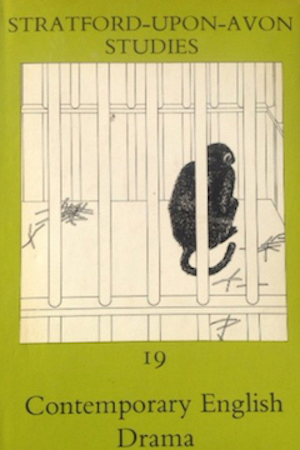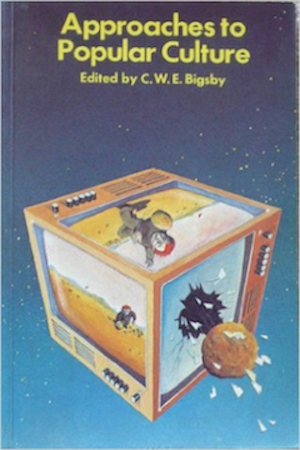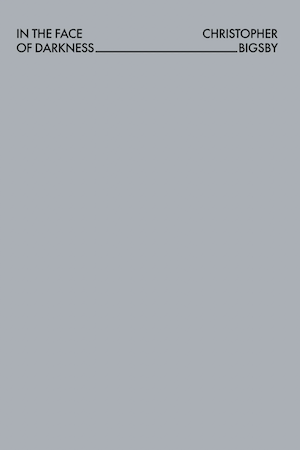
In The Face Of Darkness
Asked to open an exhibition of photographs by the American photographer Lee Miller, Christopher Bigsby was struck by images which stared into a particular darkness, war and the cruelties it unleashed, this from a woman who had once been a fashion model and then a lover and student of the surrealist Man Ray. The war, though, changed everything, ultimately taking her across Europe and into the concentration camps. But can some truths never be captured either in images or words? The poems in this book are in part prompted by Lee Miller’s work, but also include the personal, the fanciful, and a response to the natural world.

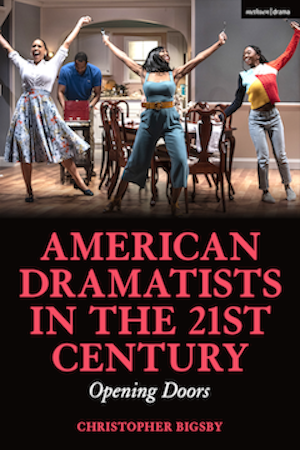
American Dramatists in the 21st Century
In American Dramatists in the 21st Century: Opening Doors, Christopher Bigsby examines the careers of seven award-winning playwrights: David Adjmi, Julia Cho, Jackie Sibblies Drury, Will Eno, Martyna Majok, Dominique Morisseau and Anna Ziegler. In addition to covering all their plays, including several as yet unpublished, he notes their critical reception while drawing on their own commentary on their approach to writing and the business of developing a career.
The writers studied come from a diverse range of racial, religious and immigrant backgrounds. Five of the seven are women. Together, they open doors on a changing theatre and a changing America, as ever concerned with identity, both personal and national.
This is the third in a series of books which, together, have explored the work of twenty-four American playwrights who have emerged in the current century.
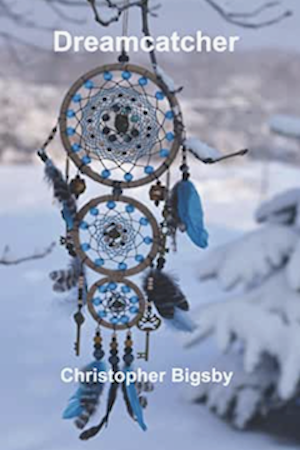
Dreamcatcher
It is 1890. New York. Political corruption is rife. Police are for sale. A young reporter is charged with investigating murders, which are murders, and suicides which may also be murders except that the law can be persuaded otherwise. He takes risks, calculated and otherwise. Not that his own life bears too much investigation. Relationships barely survive a few months at best. Every now and then, though, there is an assignment which appeals. He is sent to interview Mark Twain who had written about the gilded age in which personal and national innocence is traded for wealth. His main problem, though, is that the paper’s owner believes that the Indians have a clue to America’s destiny, so he is sent west to meet Sitting Bull. On the way, he discovers that not everything is as it seems even as he witnesses Sitting Bull’s death and the massacre at Wounded Knee in the company of someone with the ability to turn his life around. In 1890, the frontier was declared closed. Something else ended that year, an idea of America.


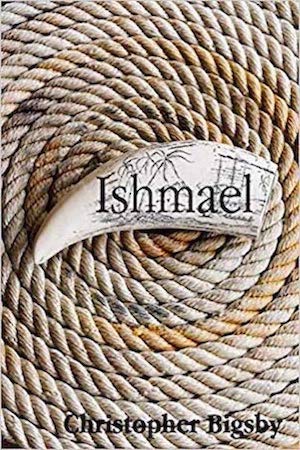
Ishmael
When, in Moby Dick, Ahab disappeared, tied to his nemesis, only one man survived to tell the tale, Ishmael. The story, it appeared, had ended. But stories never really end. What happened thereafter to Ishmael, condemned, for a while, to repeat his account as if there were a lesson to be learned, by him or those to whom he repeated a tale which had a mystery at its heart? Was the white whale more than a simple fact of nature and what drove a man to pursue it as though there were a sudden insight to be unveiled? Here is a sequel to that story as Ishmael seeks to purge his memories, trying his hand at pioneering before caught up in a bloody Civil War, once more facing death, before returning to the sea and the whaling on which he believed he had turned his back. And what of Ahab and a certain white whale? There are rumours that both still sail the deep ocean, locked in that same embrace which brought about the death of all on the Pequod. After all, sometimes rumours may have the shadow of truth about them, repetition being a fundamental law of existence.



Staging America: Twenty-First-Century Dramatists
Capturing the cultural shifts of twenty-first century America, Staging America explores the lives of eight award-winning playwrights -- Ayad Akhtar, David Auburn, Stephen Adly Guirgis, Quiara Allegría Hudes, Young Jean Lee, Bruce Norris, J.T. Rogers and Christopher Shinn—whose backgrounds reflect the social, religious, sexual and national diversity of America. Each chapter is devoted to a single playwright and provides an overview of his or her career, a description and critical evaluation of their work and of its reception. It is a book which enters into a conversation with plays which are as various as the individuals who created them and the society with which they engage.


“Christopher Bigsby's Staging America: Twenty-First Century Dramatists is a beautifully written book, one briming with fresh critical insights ... Bigsby has a story to tell, and he tells it with a narrative energy that sparkles, challenges, and educates ... In sum, Bigsby's book has the panoptic reach and cultural depth to make it one of the major coordinates in contemporary American drama scholarship, an area which he has helped re-think and remap over the years"
Modern Drama

Writers in Conversation (Volume 7)
'Writers In Conversation' compiles Christopher Bigsby's interviews with the world's greatest writers from more than two decades of the Arthur Miller Centre's International Literary Festival at the University of East Anglia. These often candid, in-depth, witty and illuminating exchanges shine a light on the craft and profession of the working writer today. Volume 7 features interviews with Paddy Ashdown, Antony Beevor, Louis de Bernieres, Kenneth Clarke, J P Donleavy, Richard Flanagan, David Grossman, Richard Holmes, Kazuo Ishiguro, Penelope Lively, David Lodge, Ruth Rendall, Kamila Shamsie, Jon Snow, Rebecca Stott, D J Taylor, Rose Tremain, and Stephen Westaby.
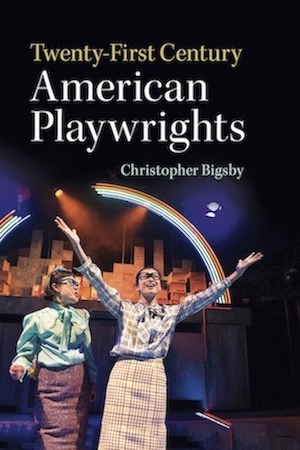
Twenty-First Century American Playrights
Twenty-First Century American Playwrights introduces nine important and exciting playwrights in twenty-first century America, exploring issues of race, gender and politics in contemporary theatre. Analysing the work of key figures, seven of whom are women and two of whom African-American, this book will appeal to students and other readers interested in modern American drama.


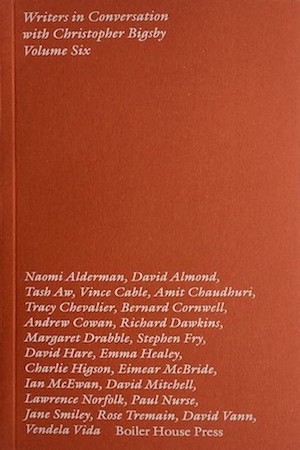
Writers in Conversation (Volume 6)
Writers in Conversation compiles Christopher Bigsby's interviews with the world's greatest writers from a decade of the Arthur Miller Centre's International Literary Festival at the University of East Anglia. These often candid, in-depth, witty and illuminating exchanges shine a light on the craft and profession of the working writer today.
Featuring interviews with Naomi Alderman, David Almond, Tash Aw, Vince Cable, Tracy Chevalier, Bernard Cornwell, Andrew Cowan, Richard Dawkins, Margaret Drabble, Stephen Fry, David Hare, Emma Healey, Charlie Higson, Eimear McBride, Ian McEwan, David Mitchell, Lawrence Norfolk, Paul Nurse, Jane Smiley, Rose Tremain, David Vann and Vendela Vida.


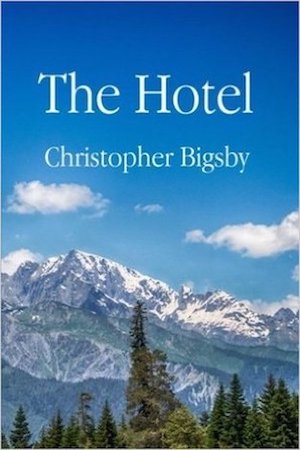
The Hotel
Henry James, John Buchan and Arthur Conan Doyle, unbeknown to one another, are all invited to a Swiss hotel where they have supposedly come to write in peace. When they arrive, however, they are informed that there has been a murder and that a mysterious figure charged to investigate would appreciate their help in solving the crime. Meanwhile, they write their stories. For Henry James it is one of intrigue involving Europe and America as a young man meets his match in more ways than one. For John Buchan it is an adventure story involving Richard Hannay, who we know from The Thirty-Nine Steps, while Conan Doyle, against his better instincts, resurrects Sherlock Holmes for another case. These stories unfold as the details of the murder are slowly revealed.



Flint
A lot of things happened in 1937. The Golden Gate Bridge opened and the New York Yankees won the World Series. Amelia Earhart went missing and the Hindenberg fell out of the sky. In Flint, Michigan, though, there was a strike by General Motors workers, a strike marked by violence. Watching this was a young girl of fourteen whose mother was dying. But a bad year became worse. Kidnapped by a gang of men she is taken into the heart of a particular darkness only to escape, pursued by still others. Looking back from the age of sixteen she tries to make sense of what has happened and the violence she has witnessed. It is now 1939 and across the Atlantic another kind of violence is born. This is the story of a young girl growing up and of a world that she discovers can be unforgiving.


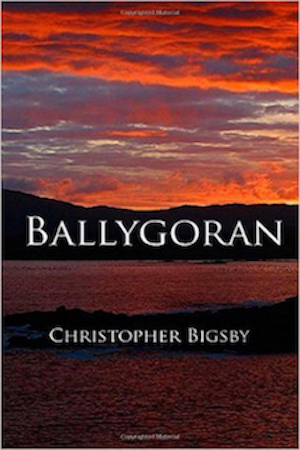
Ballygoran
Ballygoran is a small Irish town, one part memory, one part myth, with a touch of tragedy and a deal of comedy. It is a place which people leave and still more unaccountably stay. Education of the young is in the hands of a rather strange assembly of nuns, one of whom is under the impression she can sing and all of whom are believers in violence as an educative tool. They teach holy scripture and chastity, to both of which their pupils seem unaccountably resistant. Each house has its secrets, from the woman who fell in love with a camel driver, to a couple who wage unrelenting war with one another. There is a clothes store that sells pink underclothes guaranteed to resist assault, along with surgical stockings, giving it reassuring overtones of the medical profession. One woman’s husband fell off the roof while adjusting the television aerial, the surgeon respecting her request that his life not be unnecessarily prolonged, he being in no condition to join in the ethical discussion. Then there are the three Marys of whom it was said, though not in the presence, that they could have played rugby for Ireland but for their gender and the risk of injury to any team they joined. These are only part of a cast of comic characters, many of whom meet in the local pub whose licensing hours are elastic. But what is comedy without a touch of melancholy and would you not feel melancholy if it rained more days than not and if dreams never quite distilled into reality.


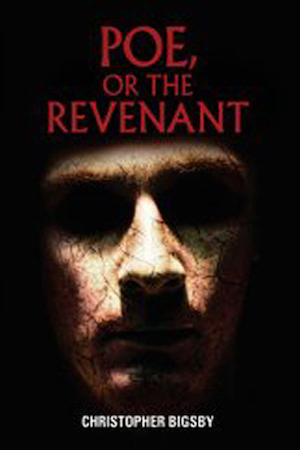
Poe, Or The Revenant
What if Edgar Allan Poe did not die, drunk on election day? What if he did not die at all? What if his planned escape from a life that oppressed him led him on a journey not only across an ocean but into the heart of darkness as he encountered those anxious to enroll him in their brotherhood? Christopher Bigsby takes a man renowned for his gothic tales, in which the buried return, and makes Poe himself the target of those with a taste for blood who are prepared to follow him until they judge him ready to join them. Poe, or the Revenant is a story worthy of Poe himself and who is to know where truth ends and invention begins ?


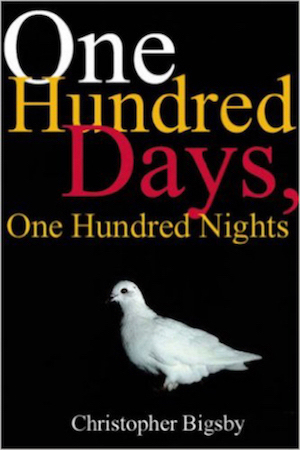
One Hundred Days, One Hundred Nights
'Sail down through the southern ocean, towards the blue-green ice of Antarctica, and to the west, where the sky and the sea meet as one, is the green mystery of a land whose history enfold myths and whose myths contain history.' So begins Christopher Bigsby's extraordinary and enchanting novel about a fictional South American country where nothing is quite what it seems. Welcome to Sagrado Dios, whose history, we enter in 1944 with a miracle, the beaching of a lost Nazi U-Boat, and the murder of its captain, mistaken for a devil by the inhabitants of a fishing-village. This is the precursor to a wild, luxurious assault on the senses. Here is a fictional history blended with elements of magic, sex, comedy and bizarre violence, woven into stories gathered by a mad professor exiled to his library where, he is compiling a history of the novel in a country where the genre has been banned by the church for the last three centuries.

“What would fans of Amado or Márquez say to a fanciful pastiche of a Latin American "boom" novel by an East Anglian professor? ¡Ay, Caramba!, maybe. This lavish homage imagines a land, Sagrado Dios, crawling with all the tall tales and odd folk you'd expect. It's a tissue of affectionate allusions, as Bigsby creates his "country of inventions" with colour and panache on every page"
Boyd Tonkin, The Independent
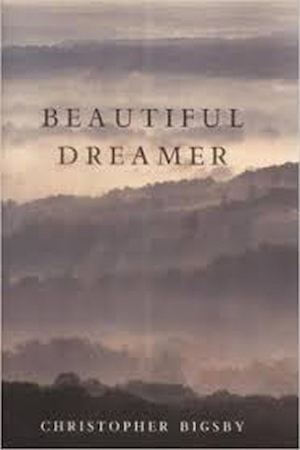
Beautiful Dreamer
In a small Southern town a white man tries to prevent a lynching and find himself branded by the mob – and worse, finds himself sheltering the dead man’s son. When the killers come around to finish the job, the two victims are forced to flee across the country in the hopes of escaping men with nothing but vengeance on their minds. Just one step behind the vigilantes a solitary lawman tracks the men, wrestling with the choice to either turn the customary blind eye or to put a stop to the intolerable logic of racial hatred. As the point of view moves seamlessly between characters, Christopher Bigsby crafts what Booklist calls a “taught, poetic narrative that has all the hypnotic power of an incantation.“


“Beautiful Dreamer has a tragic tension that recalls Steinbeck’s Of Mice and Men.”
Esquire
“A taughtly written and almost unbearably suspenseful parable of the tragedy of race relations … It’s a powerful Faulknerian vision made stark and compelling by its spare and pitiless language.”
Joyce Carol Oates
“Beautiful Dreamer is stylistically brilliant, and pitilessly gripping. I read it almost ferociously, fearing and anticipating its inevitable conclusion.”
Louis de Bernieres
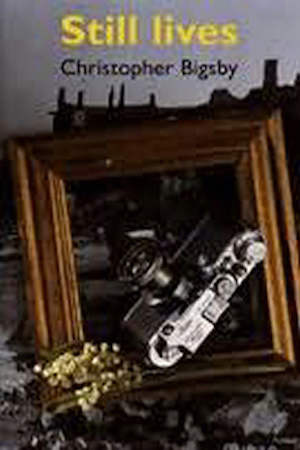
Still Lives
Inspired by the work of American photographer Lee Miller, this novel follows the life of a young woman growing up in Nebraska, to wartime London where she forfeits her career as a fashion photographer in order to catch the horror of the war in Europe on camera.

Pearl
Pearl is coming home. The child of an illicit, long-secret liaison, she has grown up wild and free among the repressed, reproving good Christian folk of Puritan New England. Her mother, Hester, has borne the shameful brand of the scarlet letter, and now Pearl, lured by the promise of a tainted inheritance, is returning to England, to her dark origins.
First in London, then Norfolk, Pearl’s pursuit of the family estate revives a conspiracy which has remained dormant since Hester fled the country. Despite her strength of character and perseverance, Pearl is not prepared for the forces determined to withstand her claim.
Against a background of mid-seventeenth century Norwich, Pearl’s story is more modern than the reader might at first imagine. It is a richly-drawn, free-standing and sometimes comic sequel to Nathaniel Hawthorne’s The Scarlet Letter.

“Pearl rollicks along superbly. There are thundery set-pieces, and an enjoyable camp exuberance to the description of a London boarding house … Most sequels have to apologise for their secondary status, but Bigsby’s … extension of The Scarlet Letter is both a distinctive pastiche of romantic fiction and a finely constructed essay in literary filiation.”
Independent on Sunday
“Bigsby’s doubly historical novel, set in the 17th century style of the 19th, is not only elegant but earthy, alive with energy and invention.”
Mail on Sunday

Hester
Hester Prynne is perhaps the greatest heroine in American literature. Readers of The Scarlet Letter have long been captivated by her strength and resolve. Now, in this remarkable and mesmerising novel, Christopher Bigsby bridges the centuries to acquaint us with a younger Hester – with her scope and resonance, her dilemma and her tragic story. We revisit Arthur Dimmesdale, Roger Chillingworth, and Hester’s daughter, Pearl. In one sense they are familiar. In another they are transformed as we discover new truths about characters whose stories were first told in one of America’s greatest novels. Hester is a romance, a journey of self-discovery that echoes the poetic cadences of Nathaniel Hawthorne’s voice while speaking directly to our own age.


“Magnificent … Unnaturally beautiful … Hester speaks anew in all her seventeenth-century glory.”
Village Voice Literary Supplement
“Bigsby’s writing reaches great heights, with wonderful descriptions.”
Sunday Telegraph
“Enchantingly beautiful.”
The Washington Post
“There are pages of great power and beauty here … In the first encounters between Hester and Dimmesdale there is a dramatic intensity which matches the original.”
Barry Unsworth
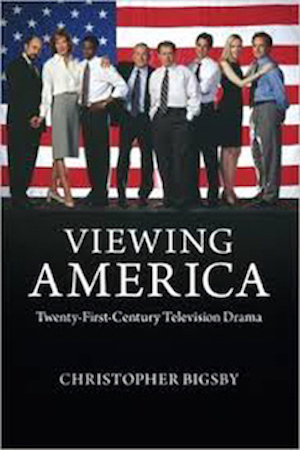
Viewing America
Something has happened in the world of television drama. For the last decade and a half America has assumed a dominant position. Novelists, screenwriters and journalists, who would once have had no interest in writing for television, indeed who often despised it, suddenly realised that it was where America could have a dialogue with itself. The new television drama was where writers could engage with the social and political realities of the time, interrogating the myths and values of a society moving into a new century. Familiar genres have been reinvented, from crime fiction to science fiction. This is a book as much about a changing America as about the television series which have addressed it, from The Sopranos and The Wire to The West Wing, Mad Men and Treme, in what has emerged as the second golden age of American television drama.


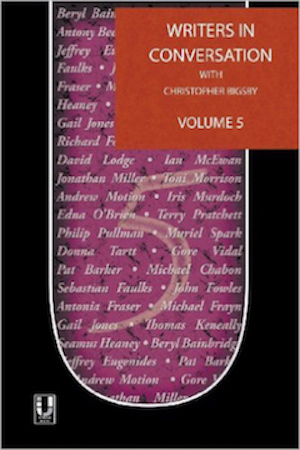
Writers in Conversation (Volume 5)
'Writers In Conversation' compiles Christopher Bigsby's interviews with the world's greatest writers from more than two decades of the Arthur Miller Centre's International Literary Festival at the University of East Anglia. These often candid, in-depth, witty and illuminating exchanges shine a light on the craft and profession of the working writer today. Includes interviews with: Beryl Bainbridge, Pat Barker, Antony Beevor, Michael Chabon, Jeffrey Eugenides, Sebastian Faulks, John Fowles, Antonia Fraser, Michael Frayn, Seamus Heaney, Alan Hollinghurst, Gail Jones, Thomas Keneally, David Lodge, Ian McEwan, Jay McInerney, Jonathan Miller, Toni Morrison, Andrew Motion, Iris Murdoch, Edna O'Brien, Terry Pratchett, Philip Pullman, Muriel Spark, Donna Tartt, Gore Vidal.


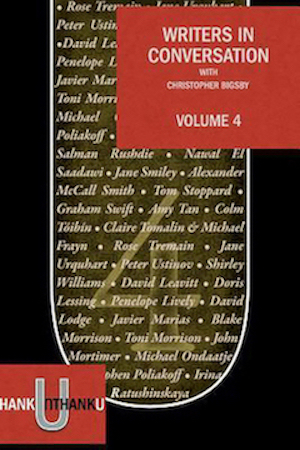
Writers in Conversation (Volume 4)
'Writers In Conversation' compiles Christopher Bigsby's interviews with the world's greatest writers from more than two decades of the Arthur Miller Centre's International Literary Festival at the University of East Anglia. These often candid, in-depth, witty and illuminating exchanges shine a light on the craft and profession of the working writer today. Volume 4 features interviews with David Leavitt, Doris Lessing, Penelope Lively, David Lodge, Javier Marias, Blake Morrison, Toni Morrison, John Mortimer, Michael Ondaatje, Stephen Poliakoff, Irina Ratushinskaya, Salman Rushdie, Nawal El Saadawi, Jane Smiley, Alexander McCall Smith, Tom Stoppard, Graham Swift, Amy Tan, Colm Tóibín, Claire Tomalin with Michael Frayn, Rose Tremain, Jane Urquhart, Peter Ustinov and Shirley Williams.


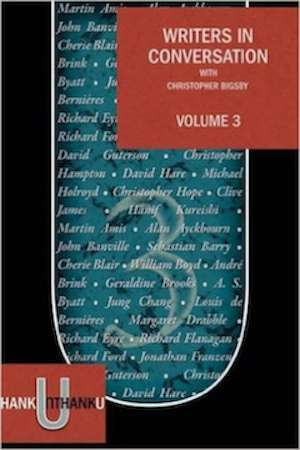
Writers in Conversation (Volume 3)
'Writers In Conversation' compiles Christopher Bigsby's interviews with the world's greatest writers from more than two decades of the Arthur Miller Centre's International Literary Festival at the University of East Anglia. These often candid, in-depth, witty and illuminating exchanges shine a light on the craft and profession of the working writer today. Volume 3 features interviews with Martin Amis, Alan Ayckbourn, John Banville, John Banville, Cherie Blair, William Boyd, André Brink, Geraldine Brooks, A. S. Byatt, Jung Chang, Louis de Bernières, Margaret Drabble, Richard Eyre, Richard Flanagan, Richard Ford, Jonathan Franzen, David Guterson, Christopher Hampton, David Hare, Michael Holroyd, Christopher Hope, Clive James and Hanif Kureishi.


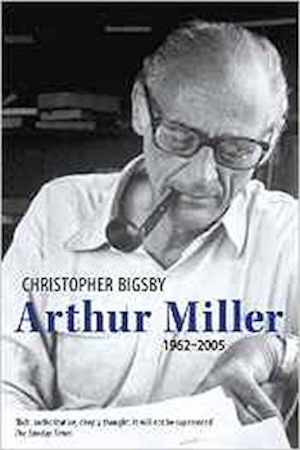
Arthur Miller 1962-2005
The first volume of Christopher Bigsby's award-winning biography of Arthur Miller was hailed as a masterpiece and the definitive account of his early years. Here, now, is the second half of Miller's extraordinary life, from 1962 to his death in 2005. In 1962 Miller's legacy was incomplete. Ahead lay eighteen plays, five films and a novella. 1962 also saw the death of his second wife Marilyn Monroe, and his marriage to the photographer Inge Morath, who was to transform him as a writer and a person. He became more political, opposing the Vietnam War and travelling widely as President of International Pen.
Miller never ceased to divide opinion or raise suspicious, and this volume explores the reasons for such different judgements on a writer who not only captured a changing America but helped to change it. Shedding new light on Miller's complexities, Bigsby sheds fresh insights crucial to an understanding of one of the world's greatest playwrights.


“Rich, authoritative, deeply thought. It will not be superseded.”
The Sunday Times
“This second half of Christopher Bigsby’s masterly and illuminating biography has all the virtues of the first. Rich in compelling detail, comprehensive in its coverage of his subject’s private and public life, it tells Miller’s tale with a fine narrative sweep and a sure grasp of the changing political background … superb testament to a great playwright and fascinating human being.”
Spectator
“There will be other biographies but Bigsby’s will stand as the foundation stone.”
The Times
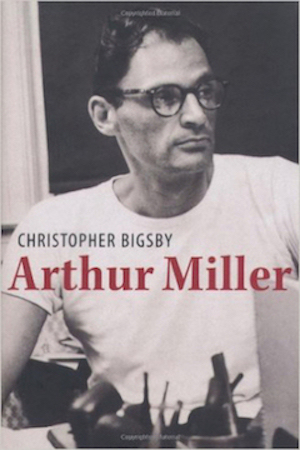
Arthur Miller 1915-1962
This is the long-awaited biography of one of the twentieth century's greatest playwrights whose postwar decade of work earned him international critical and popular acclaim.
Arthur Miller was a prominent figure in American literature and cinema for over sixty years, writing a wide variety of plays - including The Crucible, A View from the Bridge, All My Sons, and Death of a Salesman - which are still performed, studied and lauded throughout the world.
Born in 1915 to moderately affluent Jewish-American parents, Miller wrote during a fascinating time in American history. The Great Depression was a period of deprivation for many that left an indelible mark on the national psyche, and, like many, Miller found hope for the beleaguered common man in Communism. The Second World War elevated the common man to war hero, but when the Cold War subsequently began, the ugly elements of American conservatism freely persecuted writers and artists who had embraced Communism. Miller was among them. His refusal to give evidence against others to the notorious House Un-American Activities Committee in 1956 gave him a heroic role to play. In that same year, Arthur Miller momentously married the young actress Marilyn Monroe, a marriage that remains famous to this day.
Christopher Bigsby's gripping, meticulously researched biography, based on boxes of papers made available to him before Miller's death, offers new insights into their marriage, and sheds new light on how their relationship informed Miller's subsequent great plays.
After his death in 2005, many respected actors, directors and producers paid tribute to Miller, calling him 'the last great practitioner of the American stage'. Christopher Bigsby's supremely authoritative biography does full justice to Miller's life and art.


“Christopher Bigsby’s lengthy sympathetic study contains electrifying new perspectives on the subject.”
The Observer
”A fine biography … always intelligent, and rising to the challenge (which many biographers duck) of dealing with both art and life.”
Literary Review
“This is a fat, endlessly informative book, the work of a lifetime … it is as definitive as we are likely to get.”
The Sunday Times
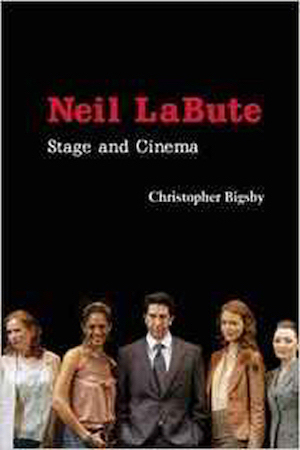
Neil LaBute
Neil LaBute is one of the most exciting new talents in theatre and film to have emerged in the 1990s. Influenced and inspired by such writers as David Mamet, Edward Bond and Harold Pinter, he is equally at home writing for the screen as for the stage, and the list of films he has written and directed includes The Wicker Man (2006), Possession (2002) and In the Company of Men (1998). As a playwright, screenwriter, director, and author of short stories, he has staked out a distinctive, and disturbing, territory. In the first full-length study on LaBute, Christopher Bigsby examines his darkly funny work which explores the cruelties, self-concern and manipulative powers of individuals who inhabit a seemingly uncommunal world. Individual chapters are dedicated to particular works, and the book also includes an interview with LaBute, providing a fascinating insight into the life of this influential and often controversial figure.



The Cambridge Companion To August Wilson
One of America's most powerful and original dramatists, August Wilson offered an alternative history of the twentieth century, as seen from the perspective of black Americans. He celebrated the lives of those seemingly pushed to the margins of national life, but who were simultaneously protagonists of their own drama and evidence of a vital and compelling community. Decade by decade, he told the story of a people with a distinctive history who forged their own future, aware of their roots in another time and place, but doing something more than just survive. Wilson deliberately addressed black America, but in doing so discovered an international audience. Alongside chapters addressing Wilson's life and career, and the wider context of his plays, this 2007 Companion dedicates individual chapters to each play in his ten-play cycle, which are ordered chronologically, demonstrating Wilson's notion of an unfolding history of the twentieth century.



Remembering And Imagining The Holocaust: The Chain Of Memory
This is a meditation on memory and the ways in which memory has operated in the work of writers for whom the Holocaust was a defining event. Writers discussed include W.G. Sebald, Primo Levi, Anne Frank, Arthur Miller, Peter Weiss and Rolf Hochhuth.


“Bigsby’s volume is a tremendous addition to the literature of the Holocaust and memory. Scholars in this field will surely come to recognize this book for the huge contribution it makes.”
Nathan Wilson, He-German
“The volume offers a well-expressed rumination on the complexities faced by writers of Holocaust literature and the controversies that have surround specific literary works.”
American Historical Review
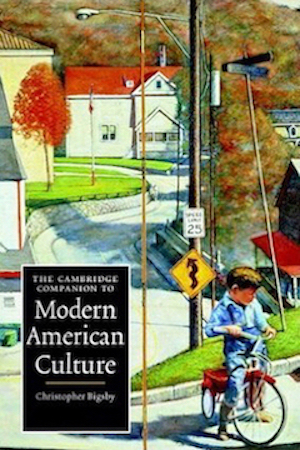
The Cambridge Companion To Modern American Culture
The Cambridge Companion to Modern American Culture offers a comprehensive, authoritative and accessible overview of the cultural themes and intellectual issues that drive the dominant culture of the twentieth century. This companion explores the social, political and economic forces that have made America what it is today. It shows how these contexts impact upon twentieth-century American literature, cinema and art. An international team of contributors examines the special contribution of African Americans and of immigrant communities to the variety and vibrancy of modern America. The essays range from art to politics, popular culture to sport, immigration and race to religion and war. Varied, extensive and challenging, this Companion is essential reading for students and teachers of American studies around the world. It is the most accessible and useful introduction available to an exciting range of topics in modern American culture.


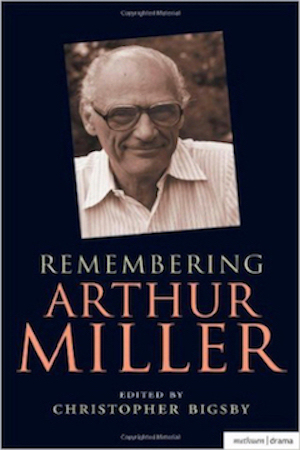
Remembering Arthur Miller
Reflections on the late Arthur Miller from over seventy writers, actors, directors and friends, with 'Arthur Miller Remembers', an interview with the writer from 1995. Following his death in February 2005, newspapers were filled with tributes to the man regarded by many as the greatest playwright of the twentieth century. Published as a celebration and commemoration of his life, Part I of Remembering Arthur Miller is a collection of over seventy specially commissioned pieces from writers, actors, directors and friends, providing personal, critical and professional commentary on the man who gave the theatre such timeless classics as All my Sons, A View from the Bridge, The Death of a Salesman, and The Crucible. Contributors read like a Who's Who of theatre, film and literature: Edward Albee, Alan Ayckbourn, Brian Cox, Richard Eyre, Joseph Fiennes, Nadine Gordimer, Dustin Hoffman, Warren Mitchell, Harold Pinter, Vanessa Redgrave and Tom Stoppard, to name but a few. Part II, 'Arthur Miller Remembers', is an in-depth and wide-ranging interview conducted with Miller in 1995. Bigsby's expertise and Miller's candour produce a wonderfully insightful commentary and analysis both of Miller's life and the life of twentieth century America. It covers Miller's upbringing in Harlem, the Depression, marriage to Marilyn Monroe, post-war America, being sentenced to prison by the House Un-American Activities Committee in 1956, and his presidency of the writer's organisation, PEN International. The discourse also provides a commentary on and analysis of his many plays and Miller's reflections on the American theatre.


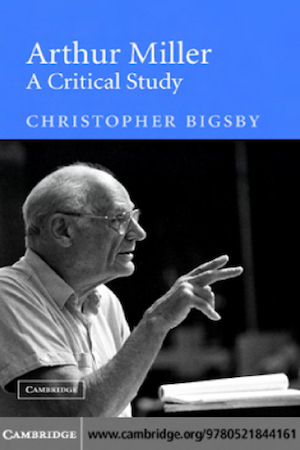
Arthur Miller: A Critical Study
Christopher Bigsby explores the entirety of Arthur Miller's work, including plays, poetry, fiction and films, in this comprehensive and stimulating study. Drawing on interviews conducted over the last twenty years, on unique rehearsal material and research archives, he paints a compelling picture of how Miller's works were influenced by and created in the light of events of the twentieth and twenty-first centuries. This is an enjoyable insight into a great playwright that will interest both theatregoers and students of modern drama.


“Bigsby's epic study is readable, comprehensible and profound ... clearly a must for Miller fans but for anyone wanting to know about the post-war struggles of the engaged artist committed both to accounting for this life, and bearing witness to history.”
The Independent
“...wide-ranging, indispensable study ... An in-depth account of everything Miller has written, in lauding the voluminous variants of his work.”
Jewish Chronicle
“A text of extraordinary thoroughness and insight. [It] is likely to remain the most sustained and penetrating examination of Miller's work for a long time to come.”
Theatre History Studies
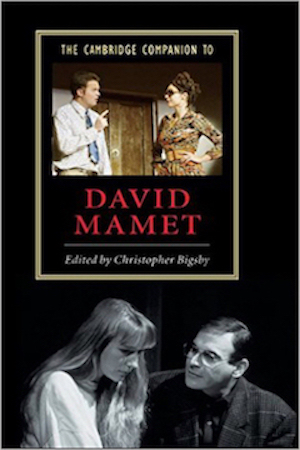
The Cambridge Companion To David Mamet
This collection of specially written essays offers both student and theatregoer a guide to one of the most celebrated American dramatists working today. Readers will find the general and accessible descriptions and analyses provide the perfect introduction to Mamet's work. The volume covers the full range of Mamet's writing, including now classic plays such as American Buffalo and Glengarry Glen Ross, and his more recent work, Boston Marriage, among others, as well as his films, such as The Verdict and Wag the Dog. Additional chapters also explore Mamet and acting, Mamet as director, his fiction, and a survey of Mamet criticism. The Companion to David Mamet is an introduction which will prepare the reader for future work by this important and influential writer.


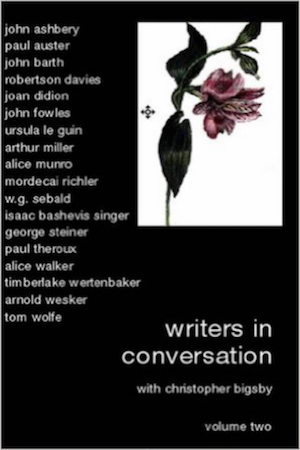
Writers in Conversation (Volume 2)
'Writers In Conversation' compiles Christopher Bigsby's interviews with the world's greatest writers from from more than two decades of the Arthur Miller Centre's International Literary Festival at the University of East Anglia. These often candid, in-depth, witty and illuminating exchanges shine a light on the craft and profession of the working writer today. Volume 3 features interviews with Martin Amis, Alan Ayckbourn, John Banville, John Banville, Cherie Blair, William Boyd, André Brink, Geraldine Brooks, A. S. Byatt, Jung Chang, Louis de Bernières, Margaret Drabble, Richard Eyre, Richard Flanagan, Richard Ford, Jonathan Franzen, David Guterson, Christopher Hampton, David Hare, Michael Holroyd, Christopher Hope, Clive James and Hanif Kureishi.


Writers in Conversation (Volume 1)
'Writers In Conversation' compiles Christopher Bigsby's interviews with the world's greatest writers from from more than two decades of the Arthur Miller Centre's International Literary Festival at the University of East Anglia. These often candid, in-depth, witty and illuminating exchanges shine a light on the craft and profession of the working writer today. Volume 3 features interviews with Martin Amis, Alan Ayckbourn, John Banville, John Banville, Cherie Blair, William Boyd, André Brink, Geraldine Brooks, A. S. Byatt, Jung Chang, Louis de Bernières, Margaret Drabble, Richard Eyre, Richard Flanagan, Richard Ford, Jonathan Franzen, David Guterson, Christopher Hampton, David Hare, Michael Holroyd, Christopher Hope, Clive James and Hanif Kureishi.
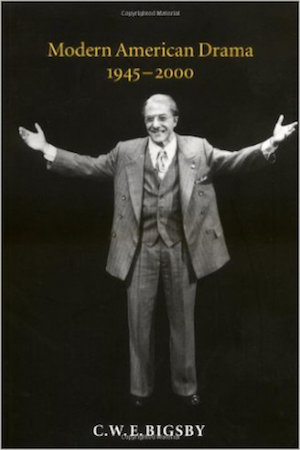
Modern American Drama 1945-2000
In this new edition of the widely-acclaimed Modern American Drama, Christopher Bigsby completes his survey of postwar and contemporary theatre and brings the reader up to 2000. While retaining the key elements of the first edition, including surveys of those major figures who have shaped postwar American drama, such as Eugene O'Neill, Tennessee Williams, Arthur Miller, Edward Albee, David Mamet, and Sam Shepard, Bigsby also explores the most recent works and performances: these include plays by established dramatists such as Miller's The Ride down Mount Morgan and Albee's Three Tall Women, as well as works by relatively new playwrights Paula Vogel, Tony Kushner, and Terrence McNally among others. Bigsby also provides a new chapter, 'Beyond Broadway' and offers an analysis of how theatre has formed and influenced the millenial culture of America.


“this is both a biographical history of the American playwrights treated, and a highly perceptive factual rendering of the development of American drama in the last half century. I believe it will be invaluable both for its insight into plays and the authors and the interplay of social forces working through the. ... Bigsby has, in effect, read the evolving American spirit through its theatre. It is work of enormous encyclopaedic breadth, reaching out into the myriad byways of American theatre, encompassing all it's styles and approaches, but always with an eye to the central preoccupation of all serious theatre, the nation's mysterious soul.”
Arthur Miller
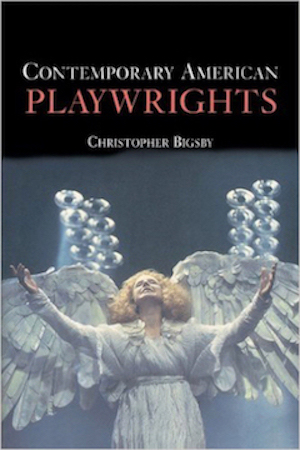
Contemporary American Playrights
Christopher Bigsby explores the works and influences of ten contemporary American playwrights: John Guare (House of Blue Leaves), Tina Howe (Museum and Approaching Zanzibar), Pulitzer Prize and Tony award winner Tony Kushner (Angels in America), Emily Mann (Anulla: An Autobiography and Having Our Say), Richard Nelson (An American Comedy), Marsha Norman (The Secret Garden), David Rabe (In the Boom Boom Room), Pulitzer Prize winner Paula Vogel (Desdemona: A Play about a Handkerchief), Wendy Wasserstein (The Sisters Rosenzweig), and Pulitzer Prize winner Lanford Wilson (Talley's Folly). Bigsby examines, in some detail, the developing careers of some of America's most fascinating and original dramatic talent. In addition to well-known works, Bigsby discusses some of the latest plays to reach the stage. This lively and accessible book, by one of the leading writers on American theatre, will be of interest to students, scholars and general theatre-goers alike.


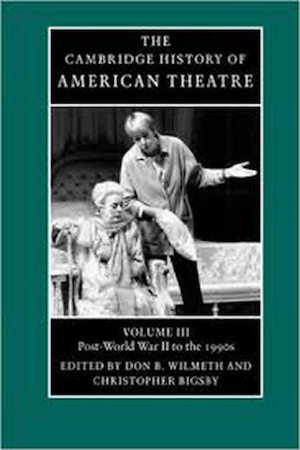
The Cambridge History Of American Theatre (with Don Wilmeth) (Volume 3)
This unique three-volume history covers all aspects of American theatre from plays and playwrights, through actors and acting, to theatre groups and directors. Each volume includes an extensive overview and timeline followed by chapters on specific aspects of American theatre including vaudeville and popular entertainment, European influences, theatre in and beyond New York, the rise of the Little Theatre movement, reception, modernism, scenography, stagecraft, and architecture. Volume I covers American theatre from its beginnings to the Civil War; Volume II covers the post-Civil War period to 1945; Volume III covers the period post-World War II to the 1990s.


“Wilmeth and Bigsby's history is the finest written about the American Theatre in many years.”
Choice
“Nowhere has the American theatre been treated to such a thorough discussion of its culture, plays and Layers, directors, designers, architects and producers, also encompassing the development and transformation of the theatre within the country's changing social and political climate ... All three volumes have greatly contributed to a better understanding of the American theatre as a reflection of the changing political, social and cultural face of the United States.”
Michael Whitlatch, Journal of Theatre Research International

The Cambridge History Of American Theatre (with Don Wilmeth) (Volume 2)
The second volume of the authoritative, multi-volume Cambridge History of American Theatre, first published in 1999, begins in the post-Civil War period and traces the development of American theatre up to 1945. It covers all aspects of theatre from plays and playwrights, through actors and acting, to theatre groups and directors. Topics examined include vaudeville and popular entertainment, European influences, theatre in and beyond New York, the rise of the Little Theatre movement, changing audiences, modernism, the Federal Theatre movement, scenography, stagecraft, and architecture. Contextualising chapters explore the role of theatre within the context of American social and cultural history, and the role of American theatre in relation to theatre in Europe and beyond. This definitive history of American theatre includes contributions from the following distinguished academics - Thomas Postlewait, John Frick, Tice L. Miller, Ronald Wainscott, Brenda Murphy, Mark Fearnow, Brooks McNamara, Thomas Riis, Daniel J. Watermeier, Mary C. Henderson, and Warren Kliewer.


“Wilmeth and Bigsby's history is the finest written about the American Theatre in many years.”
Choice
“Nowhere has the American theatre been treated to such a thorough discussion of its culture, plays and Layers, directors, designers, architects and producers, also encompassing the development and transformation of the theatre within the country's changing social and political climate ... All three volumes have greatly contributed to a better understanding of the American theatre as a reflection of the changing political, social and cultural face of the United States.”
Michael Whitlatch, Journal of Theatre Research International

The Cambridge History Of American Theatre (with Don Wilmeth) (Volume 1)
The Cambridge History of American Theatre is an authoritative and wide-ranging history of American theatre in all its dimensions, from theatre building to play writing, directors, performers, and designers. Engaging the theatre as a performance art, a cultural institution, and a fact of American social and political life, the History recognizes changing styles of presentation and performance and addresses the economic context that conditions the drama presented. The History approaches its subject with a full awareness of relevant developments in literary criticism, cultural analysis, and performance theory. At the same time, it is designed to be an accessible, challenging narrative. Volume One deals with the colonial inceptions of American theatre through the post-Civil War period: the European antecedents, the New World influences of the French and Spanish colonists, and the development of uniquely American traditions in tandem with the emergence of national identity.


“Wilmeth and Bigsby's history is the finest written about the American Theatre in many years.”
Choice
“Nowhere has the American theatre been treated to such a thorough discussion of its culture, plays and Layers, directors, designers, architects and producers, also encompassing the development and transformation of the theatre within the country's changing social and political climate ... All three volumes have greatly contributed to a better understanding of the American theatre as a reflection of the changing political, social and cultural face of the United States.”
Michael Whitlatch, Journal of Theatre Research International
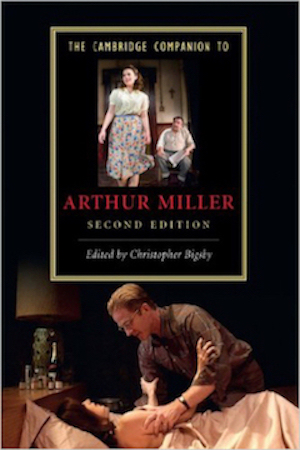
The Cambridge Companion To Arthur Miller
Arthur Miller is regarded as one of the most important playwrights of the twentieth century, and his work continues to be widely performed and studied around the world. This updated Companion includes Miller's work since the publication of the first edition in 1997 - the plays Mr Peters' Connections, Resurrection Blues, and Finishing the Picture - and key productions of his plays since his death in 2005. The chapter on Miller and the cinema has been completely revised to include new films, and demonstrates that Miller's work remains an important source for filmmakers. In addition to detailed analyses of plays including Death of a Salesman and The Crucible, Miller's work is also placed within the context of the social and political climate of the time. The volume closes with a bibliographic essay which reviews the key studies of Miller and also contains a detailed chronology of the work of this influential dramatist.



Nineteenth Century American Short Stories
In the nineteenth century the short story played a central role in the development of American and European literature and became something of an American speciality. For Edgar Allan Poe the 'tale' had marked advantages over the novel, since the unity of effect and impression - of great importance to the author - could only be achieved at a single sitting, and the short story offered the perfect opportunity. Including the works of Washington Irving, Nathaniel Hawthorne, Herman Melville, Mark Twain, and Edgar Allan Poe, Henry James and Edith Wharton this unique collection illustrates the force of the short story.
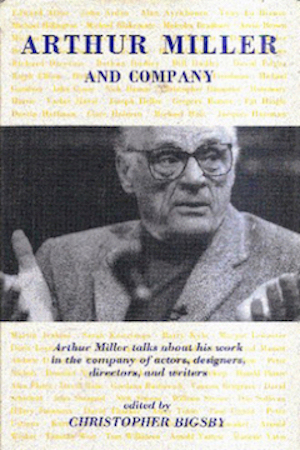
Miller And Company
Miller and Company was published to mark Arthur Miller's seventy-fifth birthday. Besides an extended intrerview with Arthur Miller, it contains contributions by leading playwrights, directors, actors, designers, reviewers.
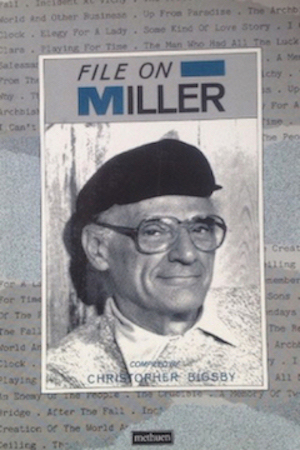
Miller On File
A collection of reviews and descriptions of Arthur Miller’s plays, fiction, and non-fictions, along with brief excepts from his essays.

Plays Of Susan Glaspell
A co-founder of the Provincetown Players, Susan Glaspell can also lay claim to a major figure in her own right. Her concern with language as subject, character as an expression of social role, plot as a mechanism that may ensnare rather than locate the self, made her a modern. This collection of her plays includes Trifles, The Outside, The Verge and Inheritors.


Cultural Change In The United States Since World War II
Cultural Change in the United States Since World War II, edited with Murice Gonnaud and Sergio Perosa, brings together, in translation, essays originally published in half a dozen different European languages on politics, history and literature.

A Critical Introduction To 20th Century American Drama (Volume 3)
In this, the third and final volume of his critical account of American drama in the twentieth century, Christopher Bigsby turns from the text-oriented drama of Williams, Miller and Albee (volume 2) in order to trace other, parallel theatrical developments of the post-war period, including contemporary groups and playwrights. Beyond Broadway denotes the geographical and spiritual challenges to prevailing standards which so fragmented the theatre of the 1960s in particular. Following his analysis of the Off-Broadway and Off-Off Broadway playwrights and theatres, Dr Bigsby separates the period into four main areas: performance theatre (including the Living Theatre and the Performance Group); the conjunction of dance, music and painting with drama in the 'theatre of images'; two successful contemporary playwrights, Sam Shepard and David Mamet; and finally the committed theatre exemplified in the San Francisco Mime Troupe and Chicano, black and women's theatre.


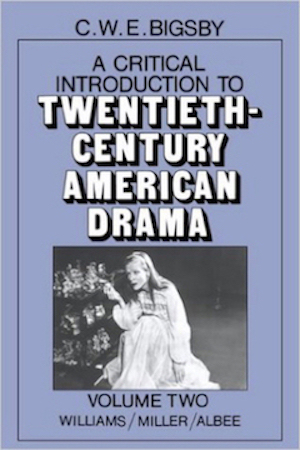
A Critical Introduction To 20th Century American Drama (Volume 2)
This is the second volume in Christopher Bigsby's critical history of the important American dramatists and theatrical movements in the twentieth-century. Volume 1 brought the story to 1940 and included the last plays of O'Neill. In two further volumes Dr Bigsby covers the period from 1940 onwards. In Volume 2 he steps aside from the strict chronological progression to consider at length and in detail the achievement of the three great playwrights who dominate the post-war scene and who have earned an international reputation: Tennessee Williams, Arthur Miller and Edward Albee. All three brought to the Broadway Theatre (discussed separately in Volume 3) a strong degree of moral seriousness and aesthetic sensitivity. Dr Bigsby gives a full account of the early unpublished plays and the major works by each playwright, drawing on biographical detail and political background to illuminate his reading of the plays, which are illustrated by photographs of important productions.



A Critical Introduction To 20th Century American Drama (Volume 1)
This is the first of two volumes in which Christopher Bigsby offers extended critical readings of the work of the leading dramatists and theatre groups in twentieth-century America. In this century drama has emerged as one of the most exciting expressions of American creativity, and during the 1930s became a primary means of addressing the cultural, political and economic changes of the period. But it has received surprisingly little attention. This is a chronological and selective study related to American culture as a whole and providing a picture of a vigorous theatre in the process of discovering its own special strengths. Volume 1 begins with the companies who first broke away from the stifling world of melodrama and naturalism - the Provincetown and Washington Square Players. Christopher Bigsby describes the emergence of important individuals and companies throughout the period to 1940, giving extended critical accounts of some playwrights, particularly Eugene O'Neill, Elmer Rice, Clifford Odets. Thornton Wilder and Lillian Hellman, and distinguishing between the aims and policies of the various companies, including the Theatre Guild and the Group Theatre. The development of left-wing theatre from 1914 is separately discussed, followed by a chapter on the brief flowering of the Federal Theatre which popularised theatre for a mass audience via its successful Living Newspaper productions. A chapter on black drama includes works by and about black Americans during this period. Some of the important figures and productions are illustrated, and there are useful appendices listing performances by major theatre companies.



The Radical Imagination And The Liberal Tradition
The Second Black Renaissance is a critical tour through more than twenty-five years of black creativity. Beginning about 1950, new social trends were producing another generation of black writers whose work would ultimately signal a second black renaissance to rival that of the 1920s.
The Radical Imagination and the Liberal Imagination collects interviews conducted by Heide Ziegler and Christopher Bigsby with twelve American writers whose work constituted different approaches to writing.


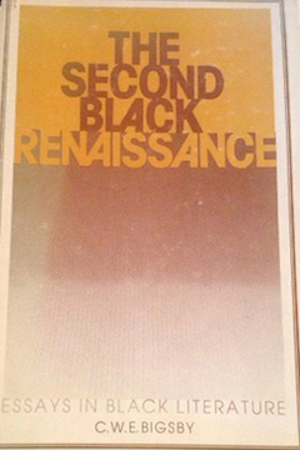
The Second Black Renaissance
The Second Black Renaissance is a critical tour through more than twenty-five years of black creativity. Beginning about 1950, new social trends were producing another generation of black writers whose work would ultimately signal a second black renaissance to rival that of the 1920s.


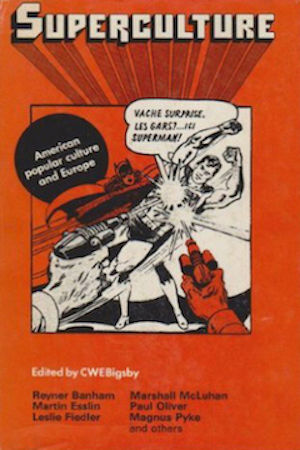
Superculture
A collection of essays on the impact of American popular culture on Europe, including essays on language, food, advertising, religion, music, fiction, television and film. Contributors include Leslie Fiedler, Marshall McLuhan, David Crystal, Reyner Banham, Paul Oliver, Martin Esslin and Thomas Elsasser.
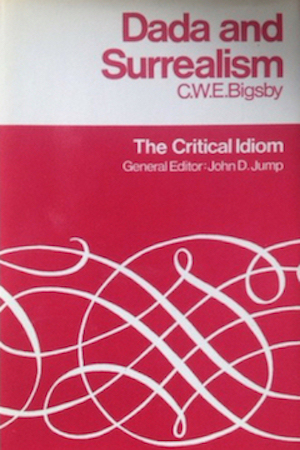
Dada And Surrealism
Who were the Dadaists and Surrealists? What were their aims and what did they actually achieve? What was the social and cultural significance of these movements?
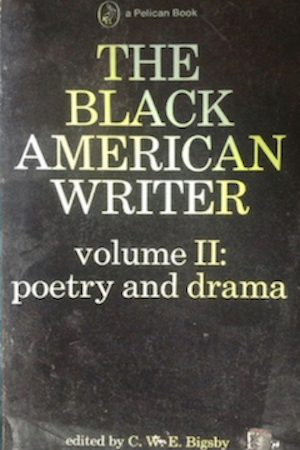
The Black American Writer (Volume 2)
A two-volume collection of essays on the literary achievement of the black American writer, volume 1 concentrating on the fiction writer and volume 2 on poetry and drama.
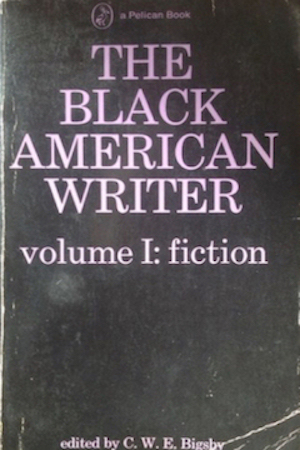
The Black American Writer (Volume 1)
A two-volume collection of essays on the literary achievement of the black American writer, volume 1 concentrating on the fiction writer and volume 2 on poetry and drama.

Confrontation And Commitment: A Study Of Contemporary American Drama
The American theatre was changing as the 1950s turned into the 1960s. This study identifies why this should so, the nature of the changes and the key figures concerned. This is the first book by a critic who would go on to be a major force in promoting the study of American drama and interpreting the work of its major figures.
